Question 4: What is Compton Effect? Develop a mathematical relation for the Compton shift.
ANSWER
Compton Effect
The phenomenon in which a high-energy photon like X-ray is scattered by an electron so that the frequency of photon is decreased (which means the wavelength is increased), is called Compton Effect.
Explanation
Compton, in 1923, directed a beam of X-rays of wavelength λ toward a block of graphite. He found that the scattered X-rays had a slightly longer wavelength and lower energies. The wavelength change was larger for greater scattering angles.
Compton explained the phenomena by assuming that if a photon behaves like a particle then its collision with other particles like electron will obey the energy and momentum conservation rules. So when the photon collides with the stationary electron it transfers some of its energy and momentum to the recoil electron. Consequently, the scattered photon has lower energy. Lower energy means increased wavelength.
Mathematical Relation
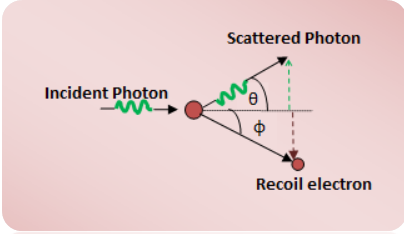
Let ‘hf’ is the initial energy and hf/c is the initial momentum of the incident photon. Similarly, the initial rest mass of the electron is m0c2 and momentum zero. When the collision occurs between them, photon transfers some of its energy to the electron and is scattered with less energy hf‘ and momentum hf‘/c. The angle of scattering of photon is θ. Similarly, the electron is recoiled with some K.E making an angle φ with the original direction of the motion of photon. The final mass energy of the electron is mc2 and final momentum is mv. Here v is the velocity of the recoiled electron. Apply law of conservation of energy,
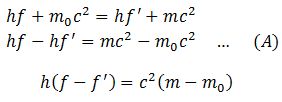
Now apply law of conservation of momentum.
Along x-axis (original direction of motion of photon),
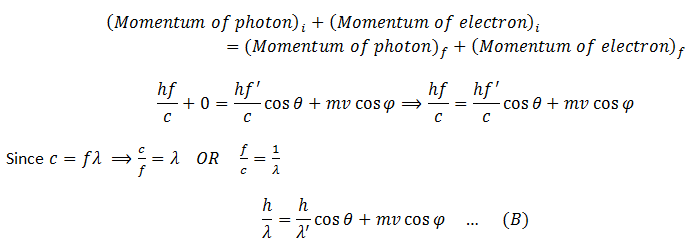
Similarly, apply law of conservation of momentum along y-axis (perpendicular to the original direction of photon),
Initial momentum of photon and electron are zero along this direction. Therefore,

The negative sign of the momentum of electron is because it is directed downward- (y-axis is negative). See the figure.

Solving equations (A), (B) and (C), we have
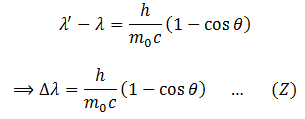
This equation shows the Compton shift of the wavelength of the photon. Clearly, it depends upon the angle θ with which the photon is scattered.
Put θ = 900, then
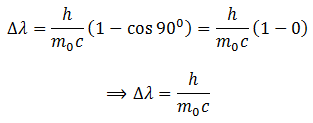
Put θ = 00, then

Therefore, the Compton wavelength shift varies between 0 and (h/m0c). h/m0c is called Compton wavelength and its value is 0.00243 nm = 0.0243 angstrom.
Conclusion
Compton Effect confirms the photon concept of radiation. It shows that electron is a material particle and here it behaves like a wave. Therefore, photon wave may also behave like a particle in motion.

Pingback:pair-production-and-annihilation-of-matter – msa
Pingback:photoelectric-effect-failure-of-classical-physics-success-of-photon-concept – msa
Pingback:long-questions-ch-18-p12 – msa